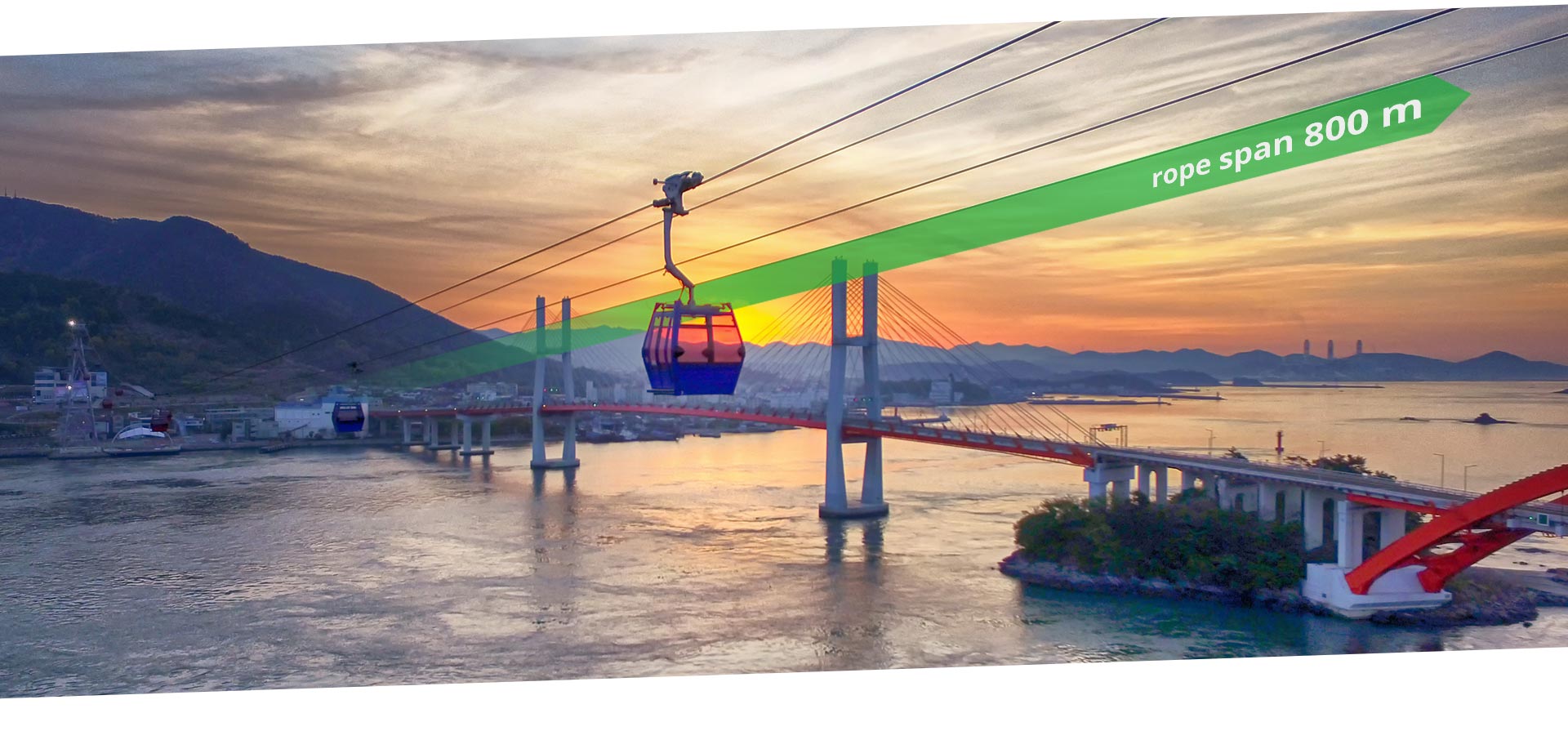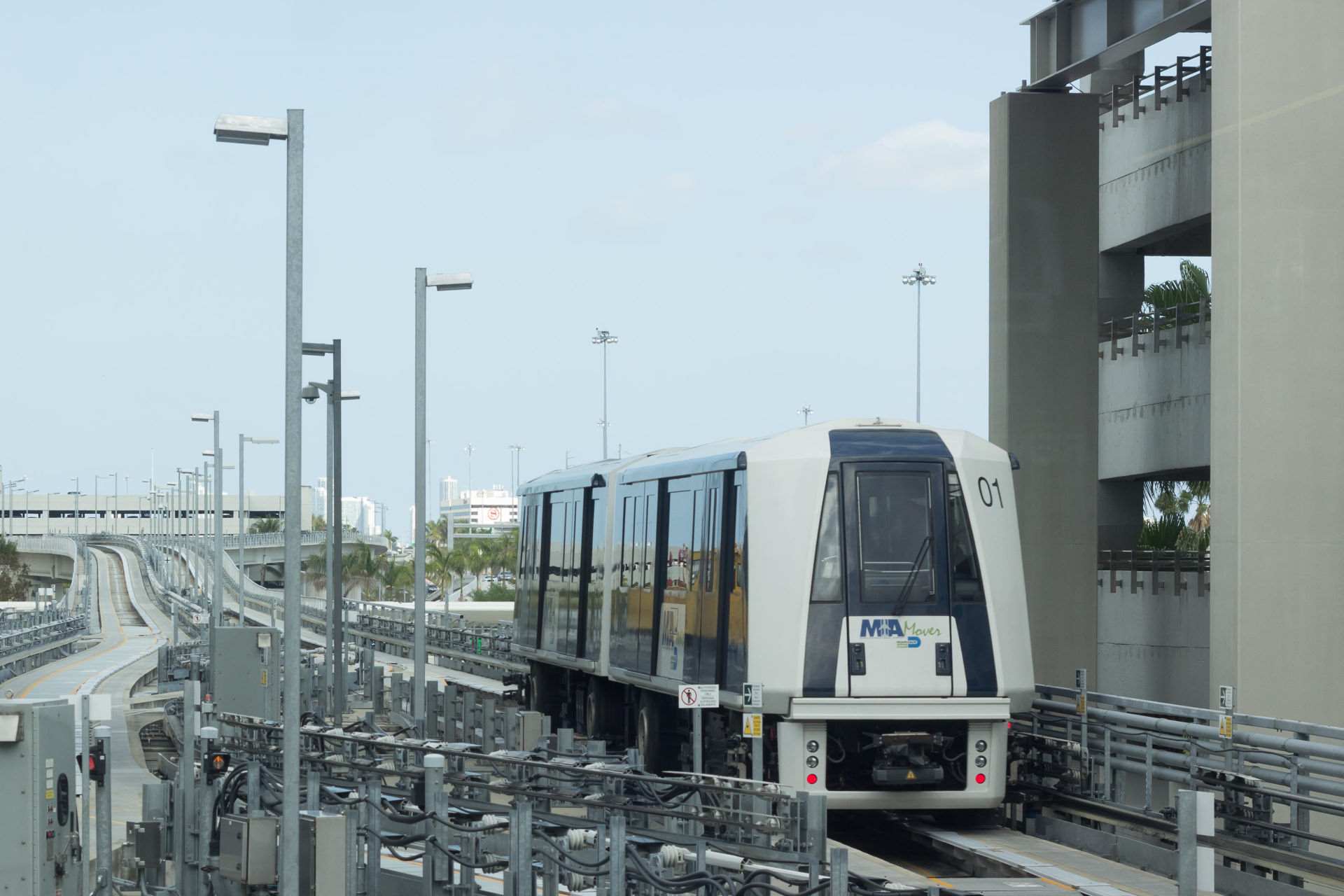
Automated People Mover (APM) | Passenger Transport System (PTS)
Automated People Mover (APM) systems are fully automated, guided and rubber-tired passenger transport systems normally operated on elevated guideways and/or in tunnels.
Thus, they are generally Automated Guideway Transit (AGT) systems. APMs are mainly used at airports as connector or feeder systems for shorter distances (< 7 km) and impress with high system availability rates. APMs are also often referred to as Passenger Transport Systems (PTS), especially in the airport environment.
Self-propelled APM
 Rubber-tired, self-propelled (with motors and gears on board) APM systems are primarily designed for high-end applications, e.g. at larger airports. Self-propelled systems have demanding infrastructure requirements, and typically require heavy concrete guideways and guideway heating for winter operation. Guideway switches allow them to be operated in „pinched loop” mode, making them network-capable, allowing high transport capacities, low headways, extremely flexible operation and good expansion possibilities. The self-propelled technology is offered by the leading vendors in the transportation industry, but it is a niche product in the transportation sector. The APM technology ist extremely reliable and achieves system availability rates above 99.5 %.
Rubber-tired, self-propelled (with motors and gears on board) APM systems are primarily designed for high-end applications, e.g. at larger airports. Self-propelled systems have demanding infrastructure requirements, and typically require heavy concrete guideways and guideway heating for winter operation. Guideway switches allow them to be operated in „pinched loop” mode, making them network-capable, allowing high transport capacities, low headways, extremely flexible operation and good expansion possibilities. The self-propelled technology is offered by the leading vendors in the transportation industry, but it is a niche product in the transportation sector. The APM technology ist extremely reliable and achieves system availability rates above 99.5 %.
Some leading transportation system manufacturers have self-propelled APMs in their product portfolio. The latest product generation of the APM world market leader Bombardier is called INNOVIA APM 300, while the counterpart from Mitsubishi Heavy Industries (MHI) is marketed under the name Crystal Mover. The APM systems from Siemens Transportation are called Cityval and Airval.
Cable-propelled APM
The cable technology for train-based systems in the horizontal way is more than 100 years old and has its origins in the USA with the cable cars like trams (e.g. San Francisco Cable Car).
 Cable-propelled APMs are rubber-tired connector/feeder systems for fast point-to-point-connections from A to B with a few number of stations (max. 3 – 5), short distances (max. 3 – 5 km), longer headways (min. 3 min) and a limited network capability. Typically, they are independent shuttle systems and in very rare cases pinched-loop systems using switches.
Cable-propelled APMs are rubber-tired connector/feeder systems for fast point-to-point-connections from A to B with a few number of stations (max. 3 – 5), short distances (max. 3 – 5 km), longer headways (min. 3 min) and a limited network capability. Typically, they are independent shuttle systems and in very rare cases pinched-loop systems using switches.
 One of the main advantages of cable-propelled APMs is the robust, simple technology which also works without any problems when facing difficult weather conditions such as ice and snow and which has a low maintenance effort. Thanks to the passive vehicles (no motors and gearboxes on board) the elevated guideway structure can be built in a lighter way as compared to self-propelled APM systems. This allows a smooth integration into the cityscape, enables larger column distances and results in cost advantages. Cable-propelled APM systems allow for high vertical gradients of up to 20%. Another advantage of cable-propelled systems is that they ride quite silently thanks to their passive vehicles. At the same time the disadvantage is that there is a constant basic noise because of the rolling motion of the rope in the rope guiding sheaves, which can be disturbing, especially in densely urban areas.
One of the main advantages of cable-propelled APMs is the robust, simple technology which also works without any problems when facing difficult weather conditions such as ice and snow and which has a low maintenance effort. Thanks to the passive vehicles (no motors and gearboxes on board) the elevated guideway structure can be built in a lighter way as compared to self-propelled APM systems. This allows a smooth integration into the cityscape, enables larger column distances and results in cost advantages. Cable-propelled APM systems allow for high vertical gradients of up to 20%. Another advantage of cable-propelled systems is that they ride quite silently thanks to their passive vehicles. At the same time the disadvantage is that there is a constant basic noise because of the rolling motion of the rope in the rope guiding sheaves, which can be disturbing, especially in densely urban areas.
Furthermore, they are limited in their operating range because they are tied to the rope which means that they are not as flexible as self-propelled APM systems and later extensions or expansions are difficult to implement if they haven´t been planned right from the outset. They are also limited in terms of line lengths, transport capacities and headway rates and the feasibility of rope-propelled APMs for anticipated projects have to be checked very carefully in the pre-planning phase. If the alignment has a lot of curves there is a higher rope friction at the rope guiding sheaves in the guideway which leads to a disadvantage regarding the energy consumption compared to self-propelled APM systems.
The products of the relevant system manufacturers Doppelmayr/Garaventa and Poma/Leitner for cable-propelled APMs are called Cable Liner and MiniMetro.